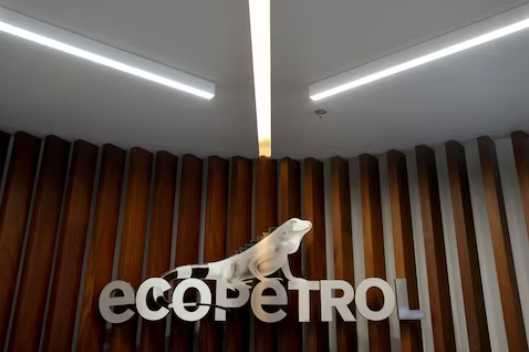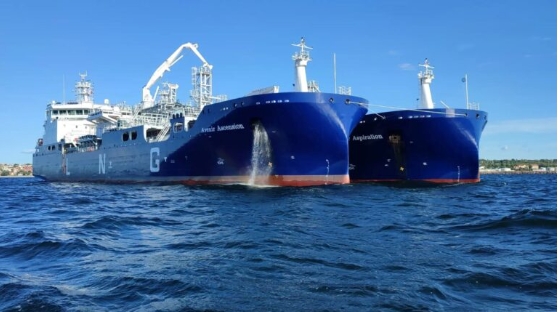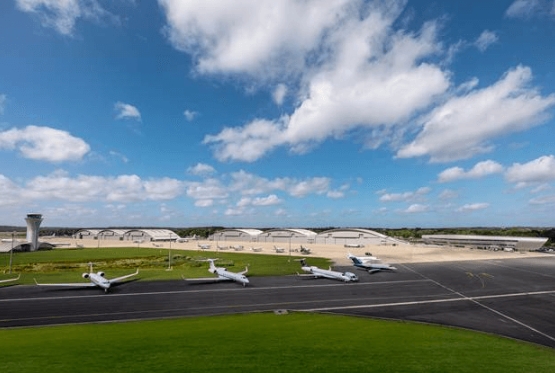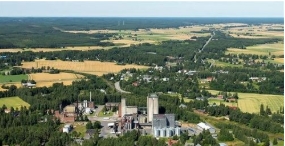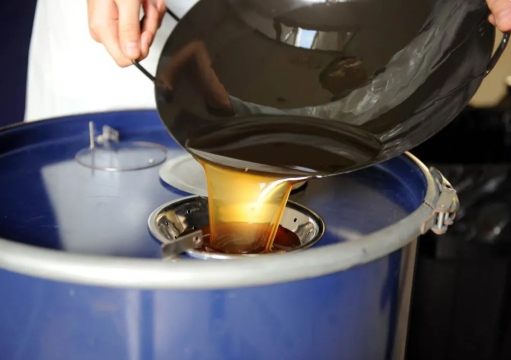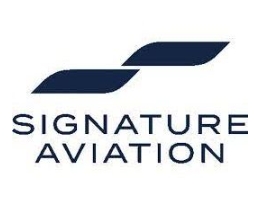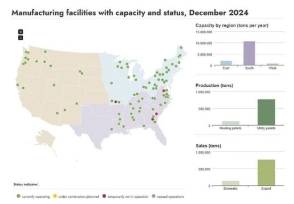Through the use of new technology, operators hope to leave difficult geology in the gob
In a year where total U.S. coal production climbed nearly 4%, America’s longwall mines didn’t keep pace. Last year, longwall mines in the U.S. produced 137.3 million tons down 5.4 million tons (3.8%) from 142.7 million tons in 2021, according to data from the Mine Safety and Health Administration (MSHA). Coal production from the 36 longwall faces represented 23.2% of the 597 million tons of coal produced in the U.S. last year.
Last year, two longwall mines ceased production and one new mine will start production later this year. The total number of faces dropped from 37 to 36 and the total number of longwall mines declined from 33 to 32. Those figures include two trona mines in Wyoming and four mines that operated two longwall faces. Century Mining LLC, operating as Allegheny Metallurgical, will begin production at the Longview mine later this year and it has been added to the census. American Consolidated Natural Resources (ACNR) is no longer operating the Belmont County mine in Ohio and Westmoreland Mining closed the San Juan mine in New Mexico. Those two mines were removed.
CONSOL Energy’s Bailey Complex remains the leading longwall complex with nearly 11.6 million tons in 2022, followed by ACNR’s Marshall County mine, which produced more than 9.6 million tons last year. Alliance Resource Partner’s Tunnel Ridge mine moved into the No. 3 position with more than 8.3 million tons. Tunnel Ridge produces coal from a single face, while Bailey and Marshall County both operate two faces. A dozen longwall mines produced more than 5 million tons per year (tpy) in 2022 (see Table 2)
Arch Resources’ Leer South mine in West Virginia ramped up in 2022 after starting production in September 2021. Several major longwall mines reported production declines during 2022 related to thermal events and difficult geologic conditions, and ACNR’s Emery County (Lila Canyon) mine in Utah remains idle due to a fire.
Coronado Global Resources is developing panels in the southern region of the mine to establish a second longwall, which should be running by Q4 2023. The company has also started the initial process of the Buchanan Expansion Plan which includes the installation of a second set of skips and new raw coal storage facility.
Signal Peak is entering a portion of its reserve where the seam will be 13.5- to 15-ft thick. They recently purchased 161 45-ton ZMJ shields, which will have a 16-ft max mining height with 420 mm legs. They are due to arrive at the mine in April 2023 via train. The shearer that will operate on that face will be the tallest version of the Joy 7LS5.
On the equipment supplier side,
a new name appears in the U.S. Longwall Census, Hauhinco Bergbautechnik or HBT. Hauhinco acquired Cat’s longwall mining equipment business (See Suppliers News, p. 34) and renamed the business. The new name in a way resembles a predecessor original equipment manufacturer (OEM), Deutsche Bergbautechnik (DBT), which was acquired by Bucyrus before it was acquired by Cat. HBT also named some of its executive team for HBT Americas and the HBT Group. (See People, p. 12).
Industry Demographics
Longwall ownership in the U.S. remained relatively unchanged. ACNR and the companies it controls (Foresight Energy and Hatfield Metallurgical) operate 11 longwall faces spread across Alabama (1), Illinois (4), Utah (1) and West Virginia (5). CONSOL Energy operates three mines with five longwall faces in Pennsylvania. Alliance Resource Partners, Arch Resources and Warrior Met Coal own three longwall faces.
With 10 faces, West Virginia remains the longwall leader, followed by Pennsylvania (6), Illinois (5) and Alabama (5).
Looking at the numbers, the average U.S. longwall mine operating in coal produced 4.73 million tpy in 2021 compared to 4.20 million tpy in 2020. On average, it has a cutting height of 95.5 in., a panel width (or face length) of 1,234.6 ft, and a panel length of 13,144.6 ft. Last year, those numbers were 96.3 in., 1,236.9 ft, and 13,091.6 ft, respectively. A total of six longwall faces have face lengths of 1,500 ft or greater. A total of 11 longwalls operate in the Pittsburgh No. 8 seam. The maximum overburden on average reaches 1,131.9 ft. Except for a few mines in Utah, most are developed with three entry gates. Using an 1,872-hp double-drum, ranging-arm shearer, they take a 40.6-in. cut. The average yield setting on the shields is 1,066.1 tons. All the faces except for three are high voltage (4,160 volts).
Iron Senergy’s Cumberland mine operates the longest face at 1,580 ft. Coronado’s Buchanan mine in Virginia and ACNR’s Emery County mine are the deepest at 2,000 ft. At 26,000 ft, Foresight Energy’s Mach No. 1 mine has the longest panel.
Longview: America’s Newest Longwall Mine
Century Mining LLC, operating as Allegheny Metallurgical, is developing America’s newest longwall mine, the Longview operation. “Developing a new longwall operation that will mine metallurgical grade coal in West Virginia with all new equipment and an outstanding management team is very exciting,” said Keith Hainer, president and CEO of Century Mining LLC. Prior to joining Century in March 2019, Hainer was COO of Contura Energy. He joined Contura as vice president-engineering when Contura (Alpha Natural Resources at the time) purchased the Massey Energy assets.
Planning for the $500 million Longview project began in late 2018. As procurement and planning reached full swing, Hainer and the Century team were faced with OEMs exiting the market and COVID-19, but they worked to overcome those issues.
“We started underground mining with the first continuous miner development section on April 28, 2022,” Hainer said. “We are now operating two continuous miner development units and developing the first longwall panel. We will start the longwall after the development of the headgate and tailgate is completed in May 2023. District 1 will have five panels in it. The mine plan is designed so we only move the longwall once per year on average.”
Allegheny Metallurgical has more than 93 million tons of recoverable reserves in the Lower Kittanning seam. The mine life for the operation extends more than 20 years with continuous longwall mining.
The Longview mine is located near Volga, W.Va. A service hoist and cage provide primary access for personnel into the mine. The seam is 887 feet below the surface at the portal facility. To move material from the mine, a 15°, 3,700-ft, dual compartment, over-and-under slope was excavated. Steel arch sets were installed on 60-in. centers and the entire slope was lagged and backfilled to protect the corridor.
The longwall will consist of a Joy shearer, Famur shields with Cat controls and an armored face conveyor (AFC) from Longwall Associates with Cat CSTs. “We have been planning for our longwall since breaking ground on the project,” Hainer said. “With the departure of Joy and Cat from the roof support market, we then looked at other manufacturers. We decided to partner with Famur because they had in-house design capability, and had European plate steel and tubing available to manufacture the supports and the hydraulics all in house.
“For support controls, we worked with EEP on custom valving and we purchased the Cat PMCR 2.0 system. Cat [now HBT Americas] is working with MSHA on the approval for this system. We partnered with Longwall Associates on the AFC head drive, tail drive and pan lines. They do a great job on these items. For the drive components, we chose Cat CSTs with electric motors manufactured by Morley in Norwich, England.”
Century purchased 198 Famur roof supports. “Our line supports are 2-m wide and the gates are 1.75 m,” Hainer said. “The supports have 400 mm legs. We ordered the supports in the fall of 2021 and the final support was delivered to the mine site on February 11, 2023.”
Becker/Service Machine will supply the longwall power and electrical control system. “The system is designed with the arc flash mitigation enclosures,” Hainer said. “We are also using the SEL electrical relays for the system.”
An 8,000 hp, 72-in. mainline conveyor, controlled by variable frequency drives (VFDs) brings coal to the surface. The longwall panel conveyors will be 60 in. and will also use VFDs with mother and booster drive configurations. On the surface, a 72-in. wide, 2,000 hp transfer conveyor moves the raw coal from the slope drive discharge into two raw coal stockpiles, which can hold 500,000 tons.
A new 1,400-tph prep plant has been built to process the raw coal. A rail loop and slide track provide the means to load a 130-car unit train. “We load the train in two 65-car splits and then couple them back together, pull them around the loop and off of the property,” Hainer said. “The system is designed to load the unit trains in less than 4 hours.” Allegheny Metallurgical loaded its first unit train during February 2023.
A New Era for Longwalls
Business is brisk these days for Longwall Associates, which makes and rebuilds AFCs and stageloaders. The company is currently conducting compatibility exercises on the Longview AFC operation at their shop in Chilhowie, Virginia. Once that is completed, they will ship the AFC to the mine in March, where they will conduct a surface build.
“The biggest change we are seeing is the mining industry adjusting to multiple OEMs being involved in a longwall build,” said Dennis Heninger, engineering manager for Longwall Associates. “The major OEMs in the longwall space are no longer manufacturing their own equipment. For example, Joy and HBT Group are no longer making powered roof supports. The Longview mine will be the first new longwall constructed in this new era, bringing together a Joy shearer, Famur shields with HBT electro-hydraulics and an AFC from Longwall Associates. It’s quite the mix of various longwall equipment, and all of these companies are working together nicely.
“It has been a cooperative effort, and it is working very well,” Heninger said. “This is an indication of how the industry will likely move forward and it has every opportunity to be a very successful method of supplying equipment.”
Longwall Associates specializes in systems with chain conveyors. “Our business model always hinged on bringing together other suppliers,” Heninger said. “This is how we have always worked. I believe that gave us a leg up on getting this order. Because the AFC is where the shearer and the roof supports meet, the AFC manufacturer usually coordinates all that activity.”
Supplies and logistics are still a challenge, but Heninger said he has seen some easing and normalization. “Not with everything, steel supply certainly has improved,” Heninger said. “Pricing has stabilized. Some items are still difficult to source. Supply chains will likely never return to the way it was before the COVID-19 disruption, and we will continue to adjust to this new normal.
“As an example, the lead time for a new longwall motor was three months and now it can be six to nine months, and we adapt and plan accordingly,” Heninger said. “Longwall operators are more aware of the situation, and they have been a lot more proactive. They have shown initiative on getting us equipment promptly, because they know it’s in their best interest, and it has really helped us meet some demanding delivery deadlines recently. The mines are really stepping up in a lot of ways, both on the purchasing side and advanced planning on the equipment recovery side as well.”
The AFCs on U.S. longwalls are still predominantly 48-mm chain with 3 x 1,900 hp on the AFC. “That’s pretty much the industry standard for new longwall mines,” Heninger said. “It’s a very reliable configuration and, for the seam heights found in the eastern U.S., there’s no need to exceed that. A lot of mines simply do not have the infrastructure to handle the larger equipment. We might see an installation or two with 52 mm chain in the next two years, but no big changes industry-wide are expected.”
Creating Consistency With Longwall Mining
Automation and autonomous mining are difficult terms to define, especially when it comes to longwall mining. Most longwall mines operating in the U.S. use some form of automation. The level of automation ranges from advancing shields after the shearer passes to programming the shearer for a specific cutting sequence to operating the entire system from a control room on the surface.
“Every longwall mine thinks they are automated, and that’s great, but they are only automated to the levels of their expectations,” said Lee Davis, global director for control and automation for Komatsu’s underground soft rock division. “We see different performance levels around the world. Most of the U.S. longwalls use some form of automation to minimize the amount of operator interaction on the face, and they let the system run the longwall most of the time.”
For perspective, however, mine operators should look at how far they have advanced along the path to fully autonomous longwall mining, where all the operators are removed from the equipment while it’s mining. “If that is the definition of automation, then we’re talking single digits among the 36 U.S. longwall faces,” Davis said. He believes the next step in that autonomous journey revolves around the sensors that will detect the coal-roof rock interface.
Rather than running equipment with batch control, Komatsu has always focused on making the longwall as autonomous as it can be. The theory is to run on sequences and deal with the exceptions as they arise, such as issues with the equipment or the geology. “Once we have that seam detection technology working, the transition to autonomous mining will be much easier,” Davis said.
Most of the U.S. longwall operators have embraced the Landmark face alignment measuring system. “With Landmark, operators are keeping the face straight,” Davis said. “The longwall runs more smoothly with proper face alignment. The next stage is determining the position of the longwall so they can steer in the gate roads. Once we accomplish that, belt management becomes easier, and the longwall will operate more reliably.
“These solutions do not increase production directly,” Davis said. “They improve the efficiency and optimize the performance of the longwall equipment, so the system can achieve more uptime.”
In the process of moving miners off the face, several U.S. longwall operators started to use remote operating centers (ROCs) underground, but they found that they could not control the longwall or the shearer effectively. “Our philosophy has moved away from ROCs and toward Remote Management Centers (RMCs) because we’re now managing the longwall remotely by feeding it information it could not work out for itself,” Davis said. “A large part of that is seam steering. We have operators underground at the moment, because we do not have telemetry for the seam location. The underground operators feed the RMC with the location of the equipment in relation to the coal seam. Using computer graphics, the operators in the RMC visualize what the operators underground are observing. They agree or disagree with what they see and then they make the adjustment for the shearer on the next pass.”
The RMC approach allows longwall operators to take many miners off the face and several longwall operators are currently using this system.
Davis is the director for controls and automation for all of Komatsu’s underground soft rock longwall mining equipment. His group has teams that develop the technology, also used on entry development and room-and-pillar products, providing common solutions across all product lines, and they also have a specialist application team, which looks after longwall mining, including the shearer, powered roof supports, AFC and the stageloader.
“The pace of technology development has accelerated in the last several years,” Davis said. He believes it was triggered by the growth in driver-assist functions with vehicles and other areas of engineering.
“People see these technology advances in their world every day and they want to use them underground,” Davis said. “We’re now adopting that technology in a meaningful way.”
Fully autonomous longwall mining hinges on the ability to detect the coal-roof rock interface, the gate roads and where the equipment is operating within the seam, Davis explained. “In the U.S., it’s primarily a coal-roof rock interface, but some mines encounter visible bands within the seam,” Davis said.
Komatsu is working on a project with the National Institute for Occupational Safety and Health (NIOSH) where researchers are evaluating the use of different technologies, such as vibration and audio data, as well as an advanced hyperspectral camera to detect the coal seam position in relation to the mining equipment. “These cameras are not just looking at an image, they are observing the wavelengths emanating from the materials,” Davis said. “Yes, it’s mostly coal, but we can also detect other specific minerals.” Komatsu and NIOSH believe these technologies could help miners better understand the equipment’s location in the coal seam in real-time.
Traditionally operators would steer the shearer by following the lead drum cutting at the roof line and they would often encounter rolls and undulations in the floor. “An undulation in the floor reappears in the roof,” Davis said. “If the roof is not flat and the shield canopy is only making contact in small areas, and roof control suffers.
“We’re trying to get to steering from the floor and maintaining a flat surface on the floor and roof, which provides better roof control,” Davis said. “Doing this we’ve seen dramatic improvements with the speed of the shearer. We see fewer cutter overloads and a range of other benefits that are related to cutting coal consistently.”
A lot of the technology is about creating consistency. “You can make some short-term gains by cutting corners, but similar to a long road trip, consistent speed usually wins the race,” Davis said. “Consistent cutting actually increases production long-term by eliminating overloads and downtime.”
The work with NIOSH is only the first stage. After decisions are made, then Komatsu will seek certification for intrinsic safety, which takes time. “The vibration technology has potential,” Davis said. “The hyperspectral camera is exciting, but it’s expensive technology, and probably not practical for day-to-day operations yet. Over the next two to three years, we’ll be rolling out different R&D projects for technologies to identify that rock-coal interface.”
When it comes to marker band detection, Davis believes that shield-mounted cameras will be very useful. “Using the cameras, we would be looking at the coal seam on the clean air side of the shearer after it has passed,” Davis said. “The operators can make adjustments in cutting height for the next pass.”
These cameras face straight forward, and Komatsu stitches images together to create a photograph of the entire 1,500-ft long face as one large image. “We can do multiple things with those cameras,” Davis said. “We currently identify the marker bands or the rock-coal interface. We could make sure the tip of the shield is positioned properly. We could also look at the top of the spill tray, which would tell us the height of the pan in front of the roof supports. The floor might not be level, or the pan might be riding on coal fines. We could determine if the AFC is riding higher than the roof supports. All these little errors are things the operator doesn’t realize are happening.
“With current shearer automation, if the pan rose by four inches, the system wouldn’t know it,” Davis said. “We would just cut four inches higher. We would use the cameras to find the errors and then correct the shearer to make sure we compensate for it. We’re trying to fuse all this information together to create exactly what the shearer operator would see underground.”
Moving forward Davis said the biggest challenge for the industry will be the right technical expertise to manage these systems. “The skill sets need to keep moving with technology,” Davis said. “We have some knowledgeable miners, but we have a generational gap with technology. As an OEM, we would like to help bridge that gap, training people to run this equipment at its full potential.”
Davis said he is really excited about the advances in technology he has seen in the last few years, and he believes the reality of running an operator-free longwall is very close.
